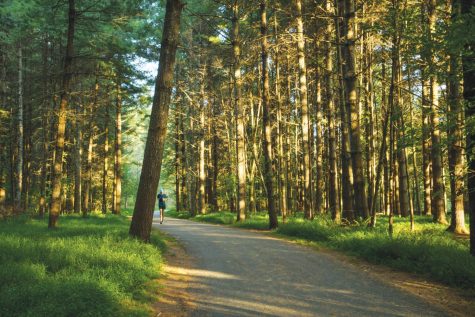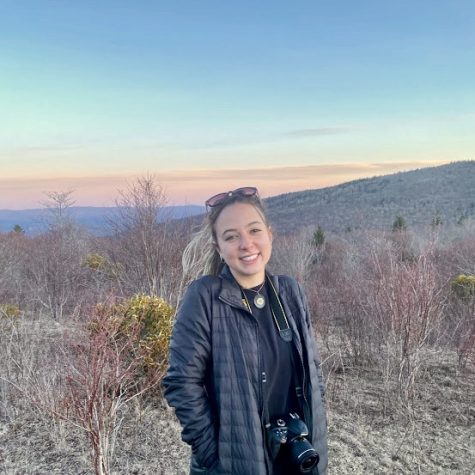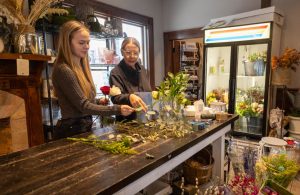Middle Fork Greenway Project aims to bridge community gap between Boone and Blowing Rock
September 5, 2019
A pedestrian-friendly commute from Boone to Blowing Rock is slowly turning into a reality on the Middle Fork Greenway.
The Blue Ridge Conservancy created the Middle Fork Greenway Project, directed by Wendy Patoprsty, to serve as a walking and biking nature trail connecting the two towns along the Middle Fork River.
Patoprsty said the project’s vision began in the ‘90s after Highway 321, the route connecting Boone and Blowing Rock, expanded from two lanes to four, which separated the communities.
“It’s a really important community asset,” Patoprsty said. “When you think about public space and public access, you might think there’s a lot in the High Country, but really a lot of it is private land.”
Approximately 1 mile of the proposed 6.5 mile trail is completed so far, connecting Tweetsie Railroad to Sterling Creek Park, near Mystery Hill.
The next sections set for construction span from downtown Blowing Rock through the Blue Ridge Parkway and the Foley Center, and from Tweetsie Railroad up to Goldmine Branch Park.
Joe Furman, planning and inspections director for Watauga County, said this project will have positive economic impacts for both Boone and Blowing Rock, physical health benefits for citizens, and additional transportation between the two towns.
“We had an economic impact study done, and it showed a healthy economic impact based on money visitors would spend while they were here, businesses that can be started as a result of that, and so forth,” Furman said.

The economic impact study showed investing in the Middle Fork Greenway would result in $10 million in health benefits, a $296,000 increase in local property tax revenue per year and $947,000 annually in business activity benefits.
The study also highlighted the greenway could result in 12,000 tourist trips each year to the area, which would generate an additional $6 million in the local economy.
According to the Middle Fork Greenway website, a case study on the Virginia Creeper Trail showed both local and non-local users of the trail spent $2.5 million annually, while businesses along the Swamp Rabbit Trail in Greenville, South Carolina have reported revenue increases between $200,000 and $400,000 annually.
Because the greenway lies on Middle Fork River, Patoprsty said the Blue Ridge Conservancy is making efforts to make the project sustainable.
“Last summer, we got a grant to do a stream restoration prioritization plan,” Patoprsty said. “And that plan is helping us to move forward on some of the restoration of the needs of the river.”
Patoprsty said the project includes planting trees and shrubs along the trail, creating a green corridor for wildlife and people to enjoy.
Patoprsty said the biggest obstacle is fundraising, as the project costs about $2 million to $2.5 million per mile.
“It’s not being funded through the county, so we’re having to get private dollars from the community, foundation money, and a lot of grants from state agencies, and even federal grants,” Patoprsty said.
Furman said the Blue Ridge Conservancy can apply for some grants as a nonprofit, and he is working with Patoprsty on additional grant applications.
Patoprsty said working with the community, including volunteers and other supporters is one of the highlights of the project.
“It’s truly been breathtaking to see the wide breadth of people who are interested in greenway trails because they’re for everyone,” Patoprsty said. “It’s a lot of access for any person of any physical ability.”
Patoprsty said she can’t think of another community project that has received this much widespread support.
“The amount of volunteers that have been contributing for over 20 years really shows the core of what greenways can do for community engagement and community involvement and changing lives of the community,” Patoprsty said.













